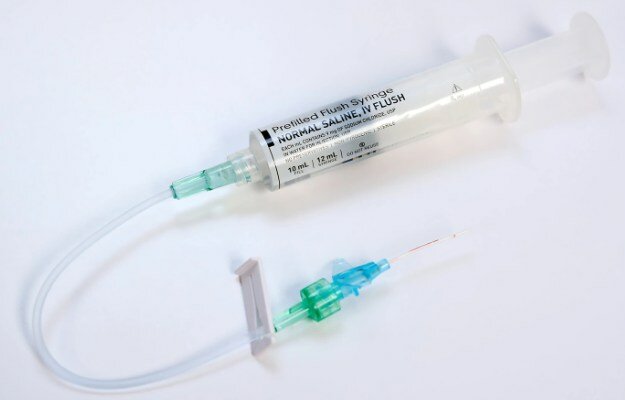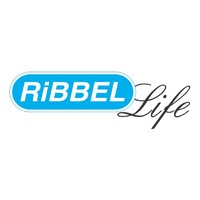Correction Tool Melds Imaging and Surgical Guidance
|
By HospiMedica International staff writers Posted on 31 Jul 2017 |

Image: Mismatch between the liver shape on a CT scan (green) and intraoperative tracing (Photo courtesy of Vanderbilt University).
Novel three-dimensional (3D) tissue deformation correction software can help accurately locate the liver during image-guided surgery.
Developed by researchers at Vanderbilt University (Nashville, TN, USA) and Memorial Sloan-Kettering Cancer Center (MSKCC; New York, NY, USA), the software generates a computer model out of the original image of the liver and simulates different forces applied during surgery, for example by emulating a packed gauze lifting the liver. The computerized tomography (CT)-derived surgical navigation map can thus better match the exposed organ shape in the operating room (OR).
In a study of the system, surgeons were shown six or seven CT images for 20 liver tumor patients in the OR, for a total of 125 alignment evaluations. Surgeons also assessed the liver during the procedure by swabbing an optically tracked stylus over its surface, and viewing it on the display. For each assessment, either conventional rigid or novel deformable alignment were presented in a randomized, blinded fashion; the surgeon provided a rating for each display compared to the previous display, whereby a negative rating indicated degradation in fidelity and a positive rating an improvement.
Statistical analysis of the series of clinician rating data indicated that the surgeons were able to perceive an improvement of the model-based registration over the rigid registration, as well as degradation when the rigid registration was compared with the novel deformable guidance information. Overall, surgeons were able to detect the variations correctly in 73% of evaluations. The researchers say that deformation correction technology could be integrated into most image-guided surgery systems. The study was published on July 10, 2017, in Surgery.
“Although systems of three-dimensional image-guided surgery are a valuable adjunct across numerous procedures, differences in organ shape between that reflected in the preoperative image data and the intraoperative state can compromise the fidelity of such guidance based on the image,” concluded senior author professor of biomedical engineering Michael Miga, PhD, of Vanderbilt University. “We assessed in real time a novel, three-dimensional image-guided operation platform that incorporates soft tissue deformation.”
Related Links:
Vanderbilt University
Memorial Sloan-Kettering Cancer Center
Developed by researchers at Vanderbilt University (Nashville, TN, USA) and Memorial Sloan-Kettering Cancer Center (MSKCC; New York, NY, USA), the software generates a computer model out of the original image of the liver and simulates different forces applied during surgery, for example by emulating a packed gauze lifting the liver. The computerized tomography (CT)-derived surgical navigation map can thus better match the exposed organ shape in the operating room (OR).
In a study of the system, surgeons were shown six or seven CT images for 20 liver tumor patients in the OR, for a total of 125 alignment evaluations. Surgeons also assessed the liver during the procedure by swabbing an optically tracked stylus over its surface, and viewing it on the display. For each assessment, either conventional rigid or novel deformable alignment were presented in a randomized, blinded fashion; the surgeon provided a rating for each display compared to the previous display, whereby a negative rating indicated degradation in fidelity and a positive rating an improvement.
Statistical analysis of the series of clinician rating data indicated that the surgeons were able to perceive an improvement of the model-based registration over the rigid registration, as well as degradation when the rigid registration was compared with the novel deformable guidance information. Overall, surgeons were able to detect the variations correctly in 73% of evaluations. The researchers say that deformation correction technology could be integrated into most image-guided surgery systems. The study was published on July 10, 2017, in Surgery.
“Although systems of three-dimensional image-guided surgery are a valuable adjunct across numerous procedures, differences in organ shape between that reflected in the preoperative image data and the intraoperative state can compromise the fidelity of such guidance based on the image,” concluded senior author professor of biomedical engineering Michael Miga, PhD, of Vanderbilt University. “We assessed in real time a novel, three-dimensional image-guided operation platform that incorporates soft tissue deformation.”
Related Links:
Vanderbilt University
Memorial Sloan-Kettering Cancer Center
Latest Surgical Techniques News
- Robotic Assistant Delivers Ultra-Precision Injections with Rapid Setup Times
- Minimally Invasive Endoscopic Surgery Improves Severe Stroke Outcomes
- Novel Glue Prevents Complications After Breast Cancer Surgery
- Breakthrough Brain Implant Enables Safer and More Precise Drug Delivery
- Bioadhesive Sponge Stops Uncontrolled Internal Bleeding During Surgery
- Revolutionary Nano Bone Material to Accelerate Surgery and Healing
- Superior Orthopedic Implants Combat Infections and Quicken Healing After Surgery
- Laser-Based Technique Eliminates Pancreatic Tumors While Protecting Healthy Tissue
- Surgical Treatment of Severe Carotid Artery Stenosis Benefits Blood-Brain Barrier
- Revolutionary Reusable Duodenoscope Introduces 68-Minute Sterilization
- World's First Transcatheter Smart Implant Monitors and Treats Congestion in Heart Failure
- Hybrid Endoscope Marks Breakthrough in Surgical Visualization
- Robot-Assisted Bronchoscope Diagnoses Tiniest and Hardest to Reach Lung Tumors
- Diamond-Titanium Device Paves Way for Smart Implants that Warn of Disease Progression
- 3D Printable Bio-Active Glass Could Serve as Bone Replacement Material
- Spider-Inspired Magnetic Soft Robots to Perform Minimally Invasive GI Tract Procedures
Channels
Critical Care
view channel
Wearable Patch for Early Skin Cancer Detection to Reduce Unnecessary Biopsies
Skin cancer remains one of the most dangerous and common cancers worldwide, with early detection crucial for improving survival rates. Traditional diagnostic methods—visual inspections, imaging, and biopsies—can... Read more
Pulse Oximeter Index Offers Non-Invasive Guides for Fluid Therapy
In patients with acute circulatory failure, deciding whether to administer intravenous fluids is often a life-or-death decision. Too little fluid can leave organs underperfused, while too much can cause... Read morePatient Care
view channel
Revolutionary Automatic IV-Line Flushing Device to Enhance Infusion Care
More than 80% of in-hospital patients receive intravenous (IV) therapy. Every dose of IV medicine delivered in a small volume (<250 mL) infusion bag should be followed by subsequent flushing to ensure... Read more
VR Training Tool Combats Contamination of Portable Medical Equipment
Healthcare-associated infections (HAIs) impact one in every 31 patients, cause nearly 100,000 deaths each year, and cost USD 28.4 billion in direct medical expenses. Notably, up to 75% of these infections... Read more
Portable Biosensor Platform to Reduce Hospital-Acquired Infections
Approximately 4 million patients in the European Union acquire healthcare-associated infections (HAIs) or nosocomial infections each year, with around 37,000 deaths directly resulting from these infections,... Read moreFirst-Of-Its-Kind Portable Germicidal Light Technology Disinfects High-Touch Clinical Surfaces in Seconds
Reducing healthcare-acquired infections (HAIs) remains a pressing issue within global healthcare systems. In the United States alone, 1.7 million patients contract HAIs annually, leading to approximately... Read moreHealth IT
view channel
Printable Molecule-Selective Nanoparticles Enable Mass Production of Wearable Biosensors
The future of medicine is likely to focus on the personalization of healthcare—understanding exactly what an individual requires and delivering the appropriate combination of nutrients, metabolites, and... Read moreBusiness
view channel
Philips and Masimo Partner to Advance Patient Monitoring Measurement Technologies
Royal Philips (Amsterdam, Netherlands) and Masimo (Irvine, California, USA) have renewed their multi-year strategic collaboration, combining Philips’ expertise in patient monitoring with Masimo’s noninvasive... Read more
B. Braun Acquires Digital Microsurgery Company True Digital Surgery
The high-end microsurgery market in neurosurgery, spine, and ENT is undergoing a significant transformation. Traditional analog microscopes are giving way to digital exoscopes, which provide improved visualization,... Read more
CMEF 2025 to Promote Holistic and High-Quality Development of Medical and Health Industry
The 92nd China International Medical Equipment Fair (CMEF 2025) Autumn Exhibition is scheduled to be held from September 26 to 29 at the China Import and Export Fair Complex (Canton Fair Complex) in Guangzhou.... Read more














